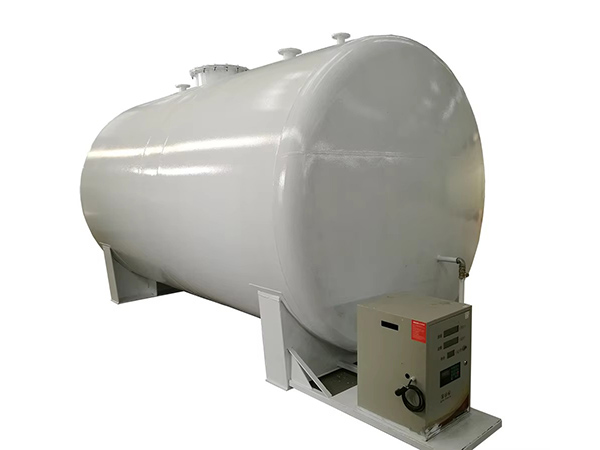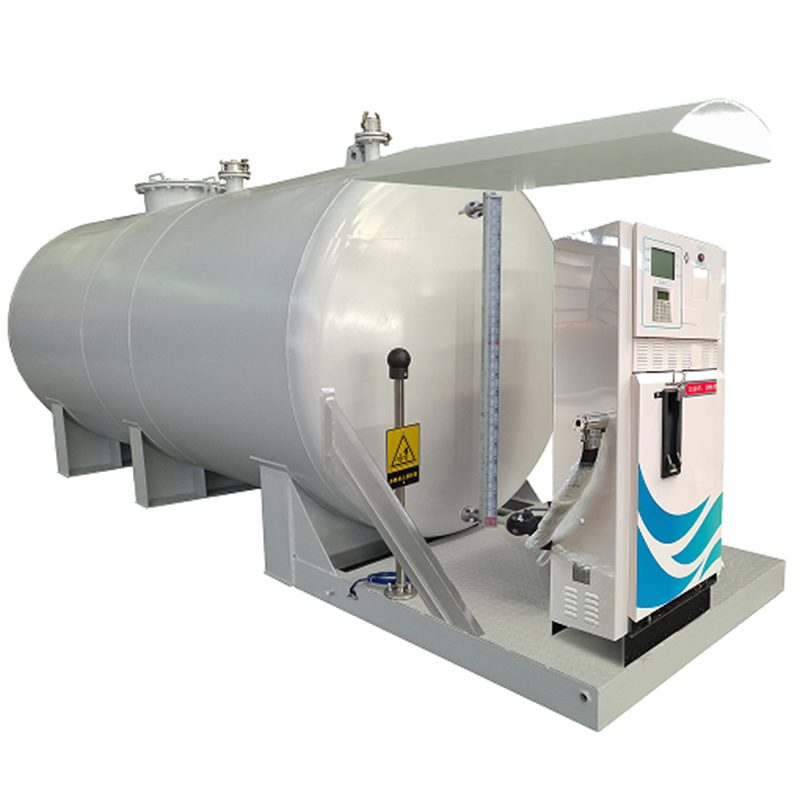Fuel Tank With Dispenser
- Description
These fuel stations are suitable for diesel supply. The tank is manufactured with carbon steel Q235. It is easy to operate. The pumping and measuring kit are reliable and accurate.Fully customisable pump bay to suit customer requirements.Heavy duty, proven performer tank within the mining and construction industry for over a decade.Plug and play power supply.Self-pumping with heavy and light vehicle and compact in size.



Configurations
--Diesel tank
--Dispenser integrated with Pumping kit
--Manhole cover
--Loading port
--Level gauge
--Delivery hose



Specification
| 1 | Tank Capacity | 5,000 liters ~ 20,000 Liters |
| 2 | Storage | Diesel or gasoline |
| 3 | Tank Type | Single wall or double walled horizontal cylindrical tank |
| 4 | Tank inside diameter | 1,600mm ~ 2,800mm |
| 5 | Tank inside length | 2,000mm ~ 8,500mm |
| 6 | Overall dimension | Length 3,500mm ~ 10,500mm width 1,620mm ~ 2,810mm height 1,950mm ~ 3,300mm |
| 7 | Tank Steel | Carbon steel Q235B, tank wall thickness 6mm or 8mm |
| 8 | Dispenser | One diesel dispenser, 220V, 50HZ(Optional 380V or other voltage) |
| 9 | Electric | Electricity control cabinet Static groundings |
| 8 | Level gauge | One side installed level gauge. |
| 9 | Surface treatment | Painting outside |
| 8 | Accessories | 1 external ladder, 1 internal ladder, One DN80 inlet One DN40 outlet for dispenser Manhole 4 lifting lugs Vent valve on top |
Features
Efficient: The front cowling area is self-bunded and can be fitted with a removable skid pump module or day tank.
Movable: Safe handling can be easily achieved using a crane or tilt-tray.
Accessible: Access manway for thorough maintenance and inspection of the primary tank.



Security Check
1. Check whether the bolts of all explosion-proof junction boxes are loose or missing to ensure the electrical sealing performance.
2. Check all sealing surfaces of the pipeline system for leaks (including flange sealing surfaces, filter cleaning ports, valve body connecting ends and opening and closing parts), and visually check whether the pipeline fasteners are loose. Check the oil inlet pipe connection, filter, flow meter, solenoid valve, refueling hose and other interface parts of the tanker for leaks.
3. Check whether the static grounding of the pipeline system is loose and check the grounding condition of the equipment.
4. Check the oil leakage sight glass of the equipment for any abnormalities.
5. Check whether the opening and closing status of the equipment valve is consistent with the nameplate flow chart.
- WhatsApp
- E-MailE-Mail:shengdingtank@126.com
- WeChatWeChat:15254863111











